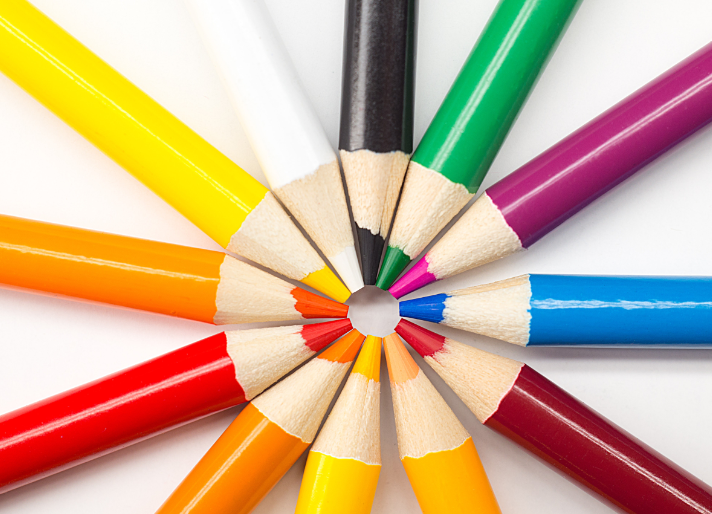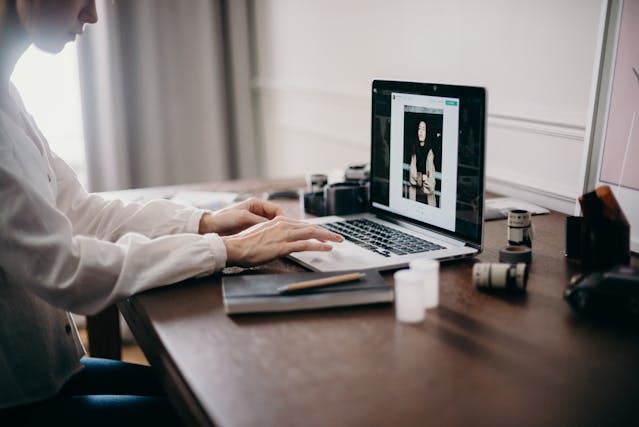Graphic designers harness the power of texture for purposes that extend far beyond mere aesthetics. Texture serves as a potent weapon in their arsenal, capable of radically altering the impact of a visual piece. Our journey into the realm of design texture takes us deep into its capacity to imbue graphic creations with context, emotion, and depth. When we consider how individuals engage with and perceive a design, the texture design principle stands as a paramount influence.
Understanding Texture in Graphic Design
In graphic design, texture is the way a design looks on the surface. Texture in graphic design is visual and intended to suggest a tactile experience, as opposed to physical texture, which can be felt. If you want your graphic design to be interesting and lively, you need to pay close attention to this texture definition.
Types of Texture in Graphic Design
Graphic designers employ a diverse array of textures, each uniquely poised to evoke a spectrum of sensory encounters in the beholder. These textures can be broadly categorized into three types:
- Physical Texture: This pertains to the tangible quality of a design’s surface. Materials such as brochures, packaging, and business cards frequently incorporate physical texture, captivating the viewer’s sense of touch and fostering interactivity;
- Visual Texture: In stark contrast to physical texture, visual texture is an illusion created by visual elements. It lacks a physical presence but skillfully mimics the appearance of a rough surface. By employing techniques like patterns, gradients, and shading, graphic designers bestow their creations with visual texture, an essential tool for adding depth and intrigue in both digital and print media;
- Abstract Texture: Abstract texture diverges from the realm of imitating physical textures. Instead, it bestows designs with an aesthetic and creative flair. Designers can inject their work with originality and individuality by crafting abstract textures through innovative strokes, brushwork, or digital manipulation.
Role of Texture in Graphic Design
Texture in graphic design plays a multifaceted role, encompassing several key functions:
- Adds Depth: Texture elevates two-dimensional images to the realm of three-dimensionality. Designers employ textures to infuse visual interest and intrigue, creating the illusion of depth and dimension;
- Creates Emphasis: Texture serves as a potent tool for emphasizing specific aspects of a design. Thoughtfully integrated textured components can direct the viewer’s gaze toward critical details or images;
- Enhances Mood: The diverse array of textures elicits a wide spectrum of emotions and settings. Some textures, such as rough and rugged, convey toughness and resilience, while others, like soft and velvety, evoke feelings of luxury and comfort. Designers strategically harness these emotional responses to reinforce their message.
Practical Applications
Consider the case of a graphic artist tasked with crafting an advertisement for an exhilarating mountain adventure tour. By incorporating a rough, rocky texture into the backdrop, the designer instantly conveys the challenging and perilous nature of the landscape that awaits adventurers. This visual texture not only adds depth but also underscores the tour’s adventurous essence.
Successful integration of texture in graphic design demands mastery of color theory, an understanding of texture psychology, and a firm grasp of design concepts. Designers must also consider how their creations will be displayed across various devices, as different screens may interpret textures differently.
The Element of Design Texture
Like size, form, and color, texture is an essential part of every good graphic design. To set the tone or ambiance you want, it is essential. Some textures, such grainy ones, may suggest roughness and roughness, whereas smooth ones could suggest refinement.
In graphic design, texture can be used effectively on many different types of objects. Here are three critical domains where textural variation is paramount:
Backgrounds
Backgrounds with textures are a great tool for making designs seem more three-dimensional. The use of textured backgrounds allows designers to construct an aesthetically pleasing setting that enhances the content. The use of textured backgrounds is common in web design because they provide visual interest and contrast to otherwise bland, solid color palettes.
| Pros of Using Textured Backgrounds | Cons of Using Textured Backgrounds |
| Enhances visual interest | May distract from content |
| Adds depth and dimension | Can affect readability |
| vokes specific moods | Requires careful selection |
Typography
Typography can be given personality and individuality through the usage of textured typefaces. When used with care, textured fonts can amplify a design’s visual impact while also fitting in with its overarching theme.
| Advantages of Textured Typography | Considerations when Using Textured Typography |
| Adds personality to text | Legibility must not be compromised |
| Conveys a specific style | Consistency in typefaces should be maintained |
| Enhances visual hierarchy | Suitable for certain design themes only |
Illustrations
Illustrations can be given a more realistic and attractive appearance by including texture. Texture is a great way to give digital art, icons, or print graphics more depth and reality.
| Benefits of Textured Illustrations | Things to Keep in Mind when Texturing Illustrations |
| Adds depth and dimension | Texture should enhance, not overwhelm the image |
| Creates a tactile sensation | Experimentation with various textures can be useful |
| Enhances overall visual appeal | Consistency in style throughout the design is key |
Texture Design Principle in Action

Careful incorporation of texture into design efforts is the essence of the texture design approach. The key is to use texture sensibly and intentionally to boost the design as a whole.
Texture in Digital Design
Adding texture to a digital design is a great way to make it more interesting and give it more dimension. To make flat surfaces seem more three-dimensional and add visual interest to a design, you can employ it. In general, there are two kinds of digital textures:
- Visual Textures: Refers to textures that are only meant to be seen, rather than felt. To mimic the appearance of actual materials like wood, metal, or cloth, designers commonly turn to visual textures, which may be generated using a variety of design tools and software;
- Tactile Textures: Textures that are both visible and physically present in the design are known as tactile textures. Tactile texture is present, for instance, in digital designs that use raised or embossed text components. Because they allow the user to physically feel the texture while interacting with the design, tactile textures can enhance the user experience by offering a sensory aspect.
Texture in Print Design
The use of actual texture in print design, as opposed to digital design, enhances the audience’s tactile experience. The tactile nature of print materials makes them stand out from the digital realm. The following are examples of frequent textural elements used in print design:
- Paper Selection: From glossy and smooth to rough and textured, there is a wide range of paper kinds to choose from. Printing items like invitations, business cards, and brochures requires careful consideration of the paper stock to get the desired effect;
- Embossing and Debossing: These techniques allow the observer to feel the printed design with their fingertips by raising or recessing certain parts. This makes the printed artwork more interactive and adds a touch of luxury;
- Die-Cutting: The process of die-cutting enables designers to carve out precise patterns or designs from printed materials, resulting in complex shapes and textures. Using this method, the end result can have a more aesthetically pleasing texture.
Balancing Texture with Other Design Elements
Even though texture is a powerful design feature in and of itself, it must be used with caution so as not to overwhelm the spectator. When working with textures, designers must think about how they relate to other aspects, like color, line, and space:
- Color Harmony: An object’s texture and surrounds’ colors should match. Saturation, hue, and contrast must match the color scheme for the texture to work;
- Line and Shape: Design lines and shapes should enhance texture, not fight with it. Lines can contrast with or highlight texture, while shapes can enclose it;
- Negative Space: Overcrowding in textured designs can be avoided by ensuring that there is sufficient negative space. As a result, the viewer’s eyes are able to relax and stay focused.
Conclusion
Creating visually appealing and functionally sound graphic designs with texture is an art form in and of itself. Mastering the use of texture in design, whether as an element or a principle, may take your graphic design projects to the next level. In graphic design, the term “texture” refers to both the visual and tactile aspects of an object. Texture, when used with care, has the power to elevate any design to the next level.
FAQ
What Does Texture Mean in Graphic Design?
Texture in graphic design signifies the perceived surface quality of a design, either tangible in print or visual in digital media.
How Texture Affects Graphic Design?
Texture brings depth and emphasis to key elements in a design, significantly shaping the mood and overall feel.
Does Texture Impact Readability in Design?
Indeed, when texture is overused or poorly applied, it can detract from readability, necessitating a balanced approach.
Is Texture Important in Digital Design?
Certainly, texture remains a crucial aspect in digital designs, adding a dimension of interest and a sense of realism.




